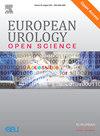Applying Focal Therapy to Lesions Detected via Magnetic Resonance Imaging: Delivering Cancer Ablation Beyond the Visibility Phenomenon
IF 3.2
3区 医学
Q1 UROLOGY & NEPHROLOGY
引用次数: 0
Abstract
The inclusion of imaging as a triage test in diagnostic guidelines for prostate cancer (PC) has introduced a visible target for guiding treatment allocation and disease management. Focal therapy (FT) is a promising approach with a low side-effect profile for treating magnetic resonance imaging (MRI)-visible PC within a limited framework of guideline recommendations or clinical trials. On the basis of accumulated clinical and research experience, we present a systematic approach to FT indications for ablation of visible targets that includes imaging findings, margin delineation, and energy selection. Confirmation of eligibility for FT is associated with the choice of energy source. We propose a 10-step framework that incorporates the contribution of all MRI sequences, the cancer growth pattern within the zonal anatomy to establish a margin around the MRI-visible lesion, safeguards for critical anatomic structures, and guidance for energy selection on the basis of specific properties. We discuss the key principles underlying this process. The aim of this methodology is to standardise FT interventions for MRI-visible PC and contribute to the development of a reproducible, stable treatment protocol. Quality control of the ablation procedure is crucial for broadening access to this technique beyond the confines of current regulatory pathways.
Patient summary
We propose a method for using results from magnetic resonance imaging (MRI) scans to guide targeted treatment of visible prostate cancer lesions. This will help to ensure accurate coverage and eradication of all of the cancer while minimising side effects.
求助全文
约1分钟内获得全文
求助全文
来源期刊

European Urology Open Science
UROLOGY & NEPHROLOGY-
CiteScore
3.40
自引率
4.00%
发文量
1183
审稿时长
49 days
 求助内容:
求助内容: 应助结果提醒方式:
应助结果提醒方式:


